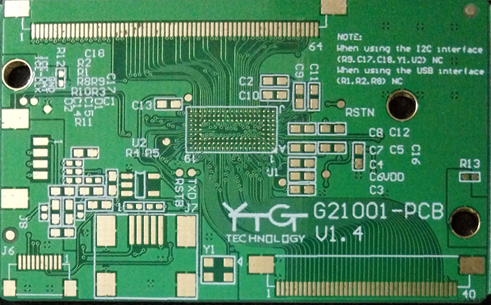Battery management system (BMS) thick copper PCB
Product Name: Thick Copper PCB
Thickness: 108um
Number of Layers: 1+4+1
Sheet: FR4 TG150
Board Thickness: 1.6mm
Panel Size 105*95mm/1
The battery management system (BMS) PCBA is a key component in the battery management system. It is responsible for monitoring and managing the charging and discharging process of the battery to ensure that the battery operates safely and efficiently.
1. High-precision monitoring:B BMS PCBA needs to integrate high-precision sensors to monitor the battery voltage, current, temperature and other parameters in real time. .
2. Electromagnetic compatibility (EMC): BMS PCBA design must consider electromagnetic compatibility to prevent electromagnetic interference from interfering with other vehicle electronic equipment and ensure the reliability of the system.
3. High temperature resistant materials: Since the battery may generate heat during operation, the BMS PCBA needs to use materials that can withstand high temperatures and adopt an effective heat dissipation design.
4.Safety protection: BMS PCBA designBattery overcharge, over discharge and short circuit protection should be considered to ensure the safety of the battery.
5. Communication interface: BMS usually needs to interact with vehicle control systems, charging piles and monitoring systems for data, so communication interfaces such as CAN, LIN, and Ethernet should be considered in the design.
6. Modular design: The BMS PCBA design should adopt a modular concept to clearly separate the signal and power paths of each module for easy management and maintenance.
7. Low power design: In order to extend battery life, BMS should adopt a low power design, including optimizing circuits, selecting low-power components, and sleep mode design.
8. Fault tolerance: BMS PCBA must have a certain degree of fault tolerance to prevent the impact of single-point failures on the entire system, which is usually achieved through redundant design and fault detection technology.
9. Compliance with regulations: In China, BMS PCBA design must follow a series of national and local standards, such as GB/T 31485-2015, GB/T 31486-2015 and GB/T 32960-2016, etc. These specifications ensure the safety and performance of electric vehicles.
10. Testing and verification: BMS PCBA needs to undergo rigorous testing and verification to ensure its reliability and safety in various application scenarios.
The battery management system (BMS) PCBA is a key component in the battery management system. It is responsible for monitoring and managing the charging and discharging process of the battery to ensure that the battery operates safely and efficiently.
1. High-precision monitoring:B BMS PCBA needs to integrate high-precision sensors to monitor the battery voltage, current, temperature and other parameters in real time. .
2. Electromagnetic compatibility (EMC): BMS PCBA design must consider electromagnetic compatibility to prevent electromagnetic interference from interfering with other vehicle electronic equipment and ensure the reliability of the system.
3. High temperature resistant materials: Since the battery may generate heat during operation, the BMS PCBA needs to use materials that can withstand high temperatures and adopt an effective heat dissipation design.
4.Safety protection: BMS PCBA designBattery overcharge, over discharge and short circuit protection should be considered to ensure the safety of the battery.
5. Communication interface: BMS usually needs to interact with vehicle control systems, charging piles and monitoring systems for data, so communication interfaces such as CAN, LIN, and Ethernet should be considered in the design.
6. Modular design: The BMS PCBA design should adopt a modular concept to clearly separate the signal and power paths of each module for easy management and maintenance.
7. Low power design: In order to extend battery life, BMS should adopt a low power design, including optimizing circuits, selecting low-power components, and sleep mode design.
8. Fault tolerance: BMS PCBA must have a certain degree of fault tolerance to prevent the impact of single-point failures on the entire system, which is usually achieved through redundant design and fault detection technology.
9. Compliance with regulations: In China, BMS PCBA design must follow a series of national and local standards, such as GB/T 31485-2015, GB/T 31486-2015 and GB/T 32960-2016, etc. These specifications ensure the safety and performance of electric vehicles.
10. Testing and verification: BMS PCBA needs to undergo rigorous testing and verification to ensure its reliability and safety in various application scenarios.
- Previous:Power system thick copper PCB
- Next:没有了





